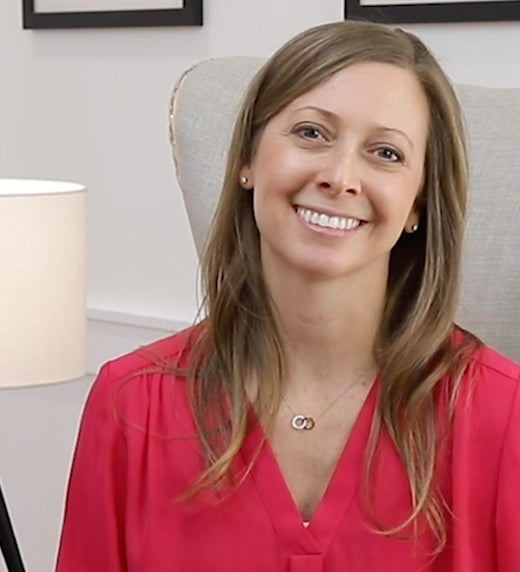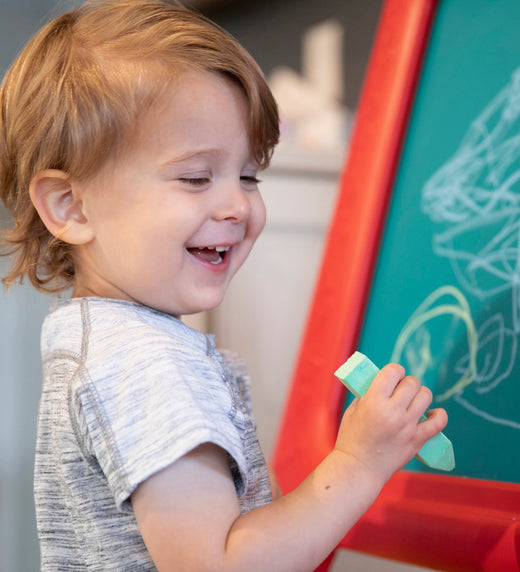
By Dr. Keili Mistovich, MD, MPH
Some of our most proud moments as parents are watching our children show kindness and gratitude toward others. Whether it’s watching your daughter share her favorite toy with another child or thanking an adult for a gift, these moments truly make parents feel like they’re doing something right in raising their kid.
Yet, at a time when it seems that children have more things than they could ever need and an unending supply of stimuli, how do parents raise children who truly appreciate what they are given, recognize kindness, and reciprocate it to others?
Importance of Kindness & Gratitude
It goes without saying that kindness matters. As it turns out, being a kind and grateful person actually makes you happier too. Studies show that children who are grateful are happier, more optimistic, and have a better social support system.
Children who understand and practice gratitude grow up to be teenagers who are less depressed and less materialistic. Even more, grateful people tend to sleep better and live longer too! There are so many benefits, so what are the key strategies for raising children to be grateful, kind tiny humans?
Gratitude Activities for Kids
Expressing gratitude takes practice. Children often need to be prompted to say thank you. The need for a reminder doesn’t mean that your child isn’t thankful; they just aren’t in the habit of saying it out loud yet. Like most things in life, showing gratitude takes practice—reminding kids to express it is part of the process.
Teaching Gratitude Through Play
A fun way for children to learn about gratitude is through play. When role playing with playhouses and play kitchens, children can take turns cooking for one another, cleaning dishes, or inviting a friend over. Each activity allows your child to practice expressing and receiving gratitude.
This is a perfect opportunity for parents to model gratitude for children. For example, when you child makes you breakfast in their play kitchen, you can say, “It was so thoughtful of you to make me pancakes! You know how much I love them! Doesn’t it feel good to do nice things for others?”
Write About Gratitude
Teach your children to write thank you notes. Every time your child is given a gift—however small or large—make certain that they write a timely thank you note. Not only does this teach your child the important skills of composing their thoughts and practicing their writing, but it also provides the opportunity for them to take a few extra moments to think about why they were given a gift and what that gift means to them.
If your toddlers are too young to write, you can have them dictate a note to you!
Tips for Writing About Gratitude:
- Have your children write their thank you notes before they’re permitted to play with or wear a gift. For birthdays and other big holidays, you may even consider spacing out the opening up of gifts. Kids often get very excited and overwhelmed with all of the presents. It’s not uncommon for children to start racing through opening their gifts and have difficulty pausing and actually appreciating each gift. Spacing them out can solve this.
- Keep a gratitude journal. Make a habit of having your child write down one thing that they’re grateful for every day and why. It can be as simple as, “I am thankful for chocolate because it makes my mouth happy,” or more complex, such as, “I am thankful for Grandma because…” Then, every few weeks, go back and read aloud all the things your child is grateful for as a reminder of all of the goodness in their world. This is particularly important when your child is sad or has had a tough day.
- Once a week, have your child write a letter to someone in their life that they’re grateful for and include specific reasons and details. For example, your child may write a letter to his teacher, saying that he’s thankful for how she’s helped him to learn his addition and subtraction, so his brain can grow and learn. Initially your child might protest, but once that letter is delivered and your child sees how happy it makes the recipient, that happiness is contagious, and it’ll be well worth the effort.
Talk About Gratitude
Studies have shown that verbalizing gratitude is an important part of learning to live a grateful life. Verbalizing gratitude is more than just saying thank you to others. The Raising Grateful Children Project at the University of North Carolina describes four main components of developing grateful children:
- Noticing
- Thinking
- Feeling
- Doing
It’s essential for your children to learn to notice, think about, and discuss feeling grateful emotions. To do so, children often need help from a parent to sort through these steps. In other words, talk out loud about the experience of receiving a gift or other act of kindness.
For example, when Grandma sends a care package in the mail, you might say, “Wow, that was so kind of Grandma to send you that package. She knows how much you love her cookies and sent them in a special package just for you! Wasn’t that thoughtful of her?”
Then you might ask, “How does it make you feel to get this special package from Grandma?” After your child answers, you can ask, “What do you think that we should do to let Grandma know how much you appreciated her kindness?”
By walking your child through this thought exercise multiple times, it’ll start to happen automatically in their own minds whenever a gift is received or some other act of kindness happens. In time, you’ll likely find your child expressing these thoughts on their own and feeling the happiness that comes from expressing gratitude to others.
Teaching Kids Gratitude Through Talking
- Dinnertime Discussion: Every night at your family dinner, go around the table and have each person say something that they’re grateful for that day. It’s just as important for kids to hear what makes adults grateful as it is for the child to think about their own gratitude. This helps children to expand their minds about new things to be thankful for. Better yet, watch their hearts swell when they learn how grateful you are for them!
- Bedtime Gratitude: When tucking your children into bed, ask them to name at least one thing that they’re grateful for. Don’t forget to take your turn too!
- Car-Ride Talks: When driving your child home from school each day, ask about something that happened that she was grateful for. This gives kids an opportunity to reflect on their day at school and may even prompt some broader conversations with your child.
Model Gratitude
Children often learn best by example, so make sure to model gratitude for your children. If a friend cooks you dinner or someone holds the door open for you, be sure to talk about it in front of your kids. Say thank you to that friend or stranger and be sure to explain to your children specifically why you are grateful for that act of kindness.
Praise Pro-Social Behaviors
It’s especially important to thank your children for the kindness that they show to you and others! Thank them for even the smallest thing and use language that describes specifically what you’re thankful for.
For example, if your child picks up his toys without you asking or shares a special toy with his sister, make sure to tell him that you noticed specifically what he did. “Thank you so much for picking up your toys. It really helps mommy when you clean up your toys when you’re done playing.” Or, “That was so very nice of you to share your favorite toy with your sister. That makes her feel so special. She really loves to play with you!”
The more specific, the better! Not only are your kids more likely to repeat these pro-social behaviors, but they’re also more likely to notice and acknowledge when others do nice things for them! This is particularly important as kids get older and social situations become more complex. Talk through tough experiences and be sure to give praise when kids do the right thing or help them figure out a better way to handle a tricky situation.
Perform Acts of Kindness
As mentioned above, kids often do best when expectations are modeled for them. Incorporate kindness into the core values of your family and find ways to show kindness to others. Noticing and talking about kindness and gratitude is vital, but perhaps even more important is taking that next step to show your children different ways to offer kindness to others and be grateful for what they have. Best of all, feeling gratitude and showing kindness leads to increased happiness, less focus on materialism, and improved life satisfaction!
A few ideas to model kindness and gratitude:
- Take food to friends when they’re sick
- Volunteer to help at a food bank or animal shelter
- Have your children choose a few toys that they no longer use to donate to kids in need
- Share your toys! Invite friends over for a fun time on your Step2 climber, play house, or sand and water tables! Letting other kids enjoy your toys makes them twice as fun!
- Participate in an event to raise money for an important cause
- Make cards for a family member or friend who is in the hospital or at home following a surgery
- Send a care package to a friend just for fun!
Benefits of Showing Gratitude
Being a parent is tough work! Raising a kind and grateful child is worth the effort. Not only does it create happier, more optimistic, and better adjusted children, but spending the time to focus on kindness and gratitude will improve the tone of your life as well.
How do you express gratitude with your little ones? If you have any fun gratitude activities for kids, share in the comments below!
Dr. Keili Mistovich, MD, MPH, is a mom, pediatrician, and fierce advocate for children. She earned a Doctor of Medicine degree and Master’s of Public Health from the University of Pittsburgh School of Medicine. Dr. Keili graduated from the Pediatric Residency Program at UPMC Children’s Hospital of Pittsburgh and was on the clinical faculty at Pitt. She also cared for children at the nationally renowned Cleveland Clinic and University Hospitals Rainbow Babies and Children’s Hospital. Dr. Keili is now a co-founder of Greater Cleveland Pediatrics, a new practice with a unique and personalized approach to patient care for all families.


